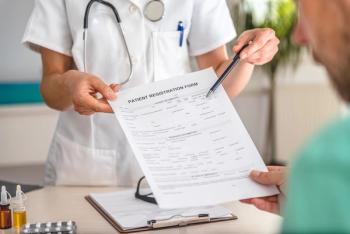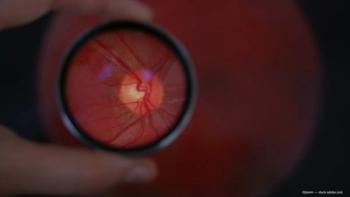
Implantable telescope provides vision in end-stage AMD
Montr?al—A visual prosthetic device used to treat visual loss resulting from end-stage age-related macular degeneration (AMD) is providing patients with clinically meaningful increases in vision and quality of life.
Montréal-A visual prosthetic device used to treat visual loss resulting from end-stage age-related macular degeneration (AMD) is providing patients with clinically meaningful increases in vision and quality of life.
The visual prosthesis, the Implantable Miniature Telescope (IMT, by Dr. Isaac Lipshitz) (VisionCare Ophthalmic Technologies Inc.), provided 90% of the patients with a significant increase in visual acuity, according to Henry Hudson, MD. Dr. Hudson reported the phase II/III 1-year results on behalf of the IMT002 Study Group at the American Society of Retina Specialists meeting in Montréal.
This study included outcomes from 192 patients who underwent implantation of the miniature telescope. Dr. Hudson cited the "unmet need" in these patients with bilateral end-stage AMD, who up to this point have had no options for improved vision.
The prosthetic device is composed of glass wide-angle micro-optics and renders the central visual field more than 55° of the central retina. With its intraocular placement in the posterior chamber, the patient uses natural eye movements for distance and near vision during dynamic and static activities.
The prospective open-label study was conducted at 28 centers and 217 patients were enrolled. The treatment included a multidisciplinary approach that incorporated visual rehabilitation into the protocol. Six postoperative visits were scheduled with the purpose of helping patients incorporate their new visual ability into their activities of daily living.
The telescope was implanted in the eye with the worse visual acuity if one or both eyes had a visual acuity of 20/200 or better. If both eyes had a visual acuity less than 20/200, the surgeon and patient determined which eye would have the device implanted.
Safety assessment
The investigators evaluated the safety of the telescope at 12 months and beyond, including the endothelial cell density and preservation of vision. The primary efficacy endpoint at 12 months required that 50% of patients gain two or more lines of distance or near visual acuity. The secondary efficacy endpoint was quality of life, which was assessed using the NEI Visual Function Questionnaire (NEI VFQ-25) and the Activities of Daily Life (ADL) Scale, Dr. Hudson explained.
The mean patient age was 75 years and 53% were men; 49% of the patients had a disciform scar, 43% geographic atrophy, and 8% both of these. The mean visual acuity was 20/316, which is defined by the International Classification of Diseases as severe visual impairment.
The visual acuity endpoint was met in 90% of the patients. The protocol required that 50% meet this endpoint. Six months after the procedure, 89% of patients (n = 202) had gained two or more lines of best-corrected distance or near visual acuity, and 79% gained three or more lines. At 1 year after implantation, 90% gained two or more lines of best-corrected distance or near visual acuity (n = 192), and 87% gained three or more lines.
"The increase in vision provided meaningful gains in the patients' quality of life," Dr. Hudson reported.
The eyes with implants achieved vision that was significantly (p < 0.0001) better than that of the fellow control eyes without implants for both distance and near vision. Regarding safety, 95% of patients had preservation of vision and the endothelial cell loss was 25% compared with the target of 17%. Most of the cells were lost at the time of surgery and the endothelial cell density tends to stabilize over time.
Newsletter
Don’t miss out—get Ophthalmology Times updates on the latest clinical advancements and expert interviews, straight to your inbox.









































